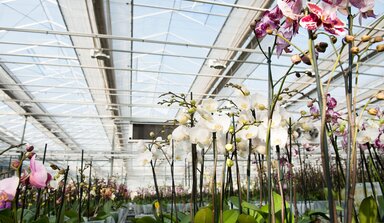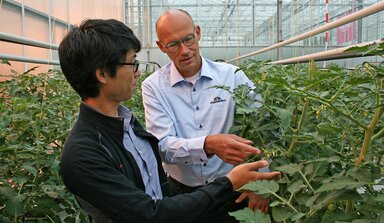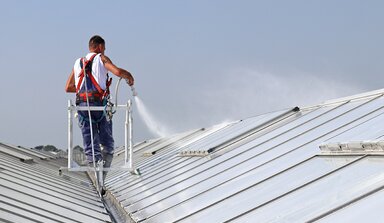Crop growing consultant Willem van Dijk ‘Temporary coatings help growers in their battle against climate change’
Growers throughout the world are experiencing the adverse consequences of climate change, including in covered crops. Extreme weather conditions, which sometimes last for long periods of time, require additional protective measures. The broad selection of Lumiforte's temporary coatings makes custom applications possible, says international crop growing consultant Willem van Dijk.
Independent crop growing advisor Willem van Dijk provides guidance to tomato and cucumber growers in various countries. Aside from customers in the Netherlands, he regularly travels to south Germany, Austria, the Czech Republic, Northern Spain and Mexico. He also serves two customers in Japan and Vietnam via the internet.
‘From my own experience and from the climate data that I can track online, I know that climate change is noticeable everywhere,’ the crop growing specialist says. ‘You also see it clearly when you review the climate graphs over the last few decades. We are increasingly confronted with extreme weather conditions, sometimes over longer periods of time. This increasingly more often results in stressful situations.’
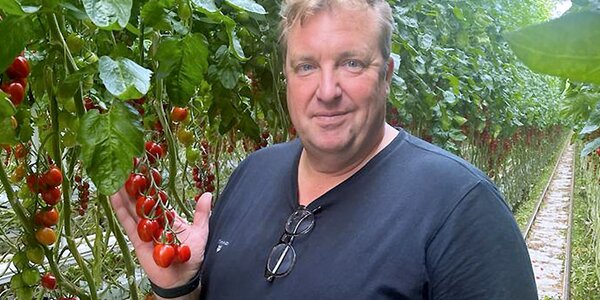
Willem van Dijk - Crop growing consultant
Controlling the 24-hour temperature
The biggest challenges for covered crops are the prevention of plant stress and limiting the 24-hour temperature during hot, sunny periods. ‘Only vital, active crops can grow undisturbed,’ says the consultant. ‘How do you accomplish this when it stays sunny for weeks in a row and daytime temperatures run up to well over 35°C? I am regularly asked that question. Fortunately, I am able to provide a nuanced response to this.’
From chalk to coatings
In the past, growers readily resorted to chalk to drastically reduce radiation under such conditions. This practice still persists today in some cases.
‘Traditional chalk definitely helps to eliminate sharp edges and to reduce the temperature in the greenhouse, but it also has its drawbacks,’ says Van Dijk. ‘Chalk is a drastic remedy that aside from heat also eliminates a lot of light. When there is reduced sunlight for a period of time and the outdoor climate becomes more bearable, this is at the expense of crop growth. Furthermore, chalk is not very rain-resistant, as a result of which the cooling effect after an interim downpour will be noticeably reduced. Fortunately, today there is a broad selection of temporary coatings with specific properties that provide for more custom options. My experience with the ReduSystems coatings has been excellent.’
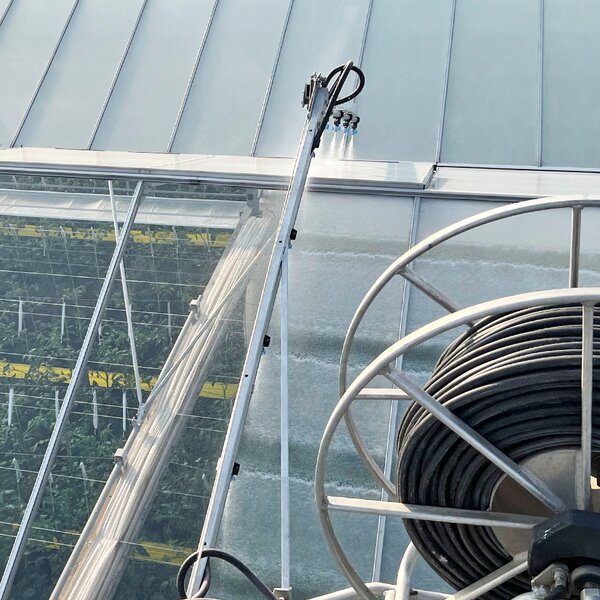
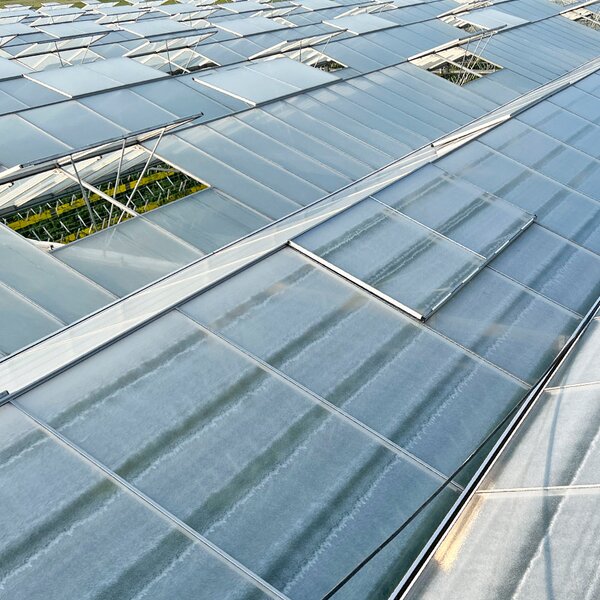
Specific properties
ReduSystems products are subdivided into three categories: agents with a shading effect that effectively reflect heat (ReduSol and ReduHeat); agents that diffuse incident light (ReduFuse and ReduFuse IR) and specialties for specific applications, such as ReduFlex Blue (for ornamental crops) and AntiCondens. Furthermore, there is ReduClean that growers can use to safely and effectively remove these, as well as other, temporary coatings from the greenhouse cover as soon as the need for structurally shading the greenhouse has diminished.
Last but not least, Lumiforte has developed SprayChalk, which, during a period of extremely high radiation, can be applied over another coating as extra protection against excessively high temperatures. After a few rain showers, it automatically rinses off the greenhouse, after which the underlying coating once again does its work.
Van Dijk has acquired experience with most of these products in his vegetables consulting practice. ‘ReduSol has the highest cooling effect, but also eliminates the highest amount of light,’ he says. ‘This is why this product is often used in regions with high natural light intensity, such as the Mediterranean, Mexico and the southern parts of the United States.’
ReduHeat also provides a fairly high cooling effect, but allows more PAR light through and also somewhat diffuses the light. ‘This product performs well in places such as Western and Central Europe. ReduFuse and ReduFuse IR are used more often in Northern Europe and Canada.’
ReduFuse allows PAR light as well as IR radiation through, but also significantly diffuses the light. This has its advantages, the consultant observes. ‘Diffuse light penetrates more deeply into the crop, as a result of which a larger portion of the plant contributes to photosynthesis. Furthermore, diffuse light produces less stress. ReduFuse IR also blocks a portion of the heat radiation. In fact, its effect lies between ReduHeat and ReduFuse.’
The crop growing consultant does not have any experience with ReduFlex Blue. This coating was specifically developed to influence the incident light spectrum. We refer to this as 'photo-selective'. It blocks a portion of the blue light, which makes it easier for ornamental crops to grow longer flower stems. ReduFlex Blue also allows less infrared light through, as a result of which it also has a cooling effect on the plant and the greenhouse climate.
Advisory role
Due to the broad selection of removable coatings, regional climate differences, the availability of other control instruments (mobile shading systems, atomizers, air conditioning and more) and the often specific needs of crops and varieties, optimal protection often requires thorough preparation. When clients ask him for advice, Van Dijk deliberately takes his time.
Welcome addition
‘The goal is a vital crop and the means are a greenhouse climate that makes this possible,’ says the consultant about the basic premise. Most farms in the high-tech greenhouse cultivation sector have various standard control instruments at their disposal to achieve this. ‘Temporary coatings can be a welcome addition to eliminate the sharpest edges caused by extreme weather conditions,’ Van Dijk adds. ‘Depending on the situation and requirements, you must first select the proper product and then the right dosing. Is a thin layer sufficient or is a thicker layer necessary? Or is it better to combine two products at different times, such as ReduFuse for the entire season and SprayChalk for a month of extra cooling? It is nice to be able to explore these options with the customer and to come up with a good solution together. What is clear to me is that customers take climate change seriously and are recognizing the added value of removable coatings.’
